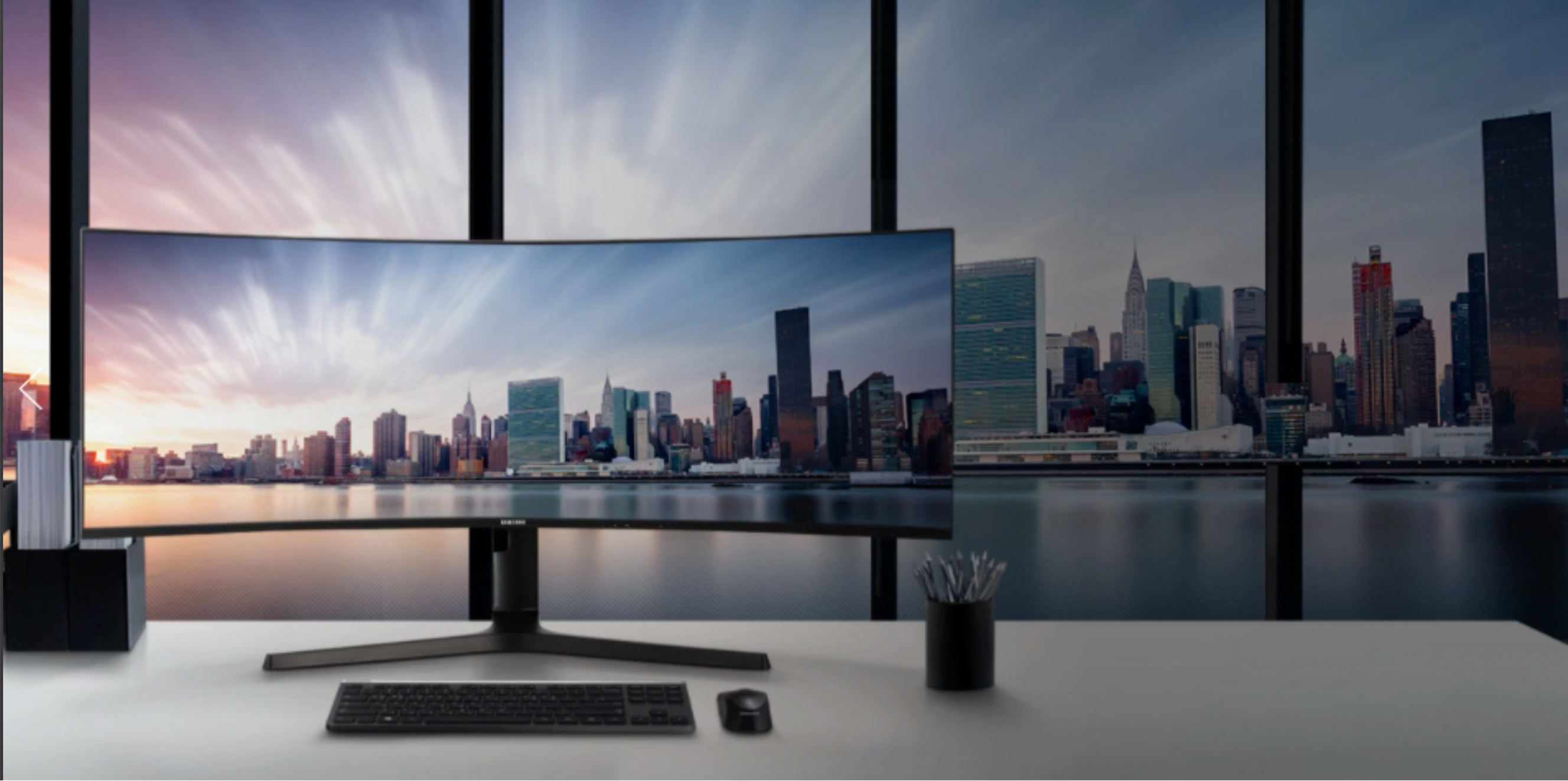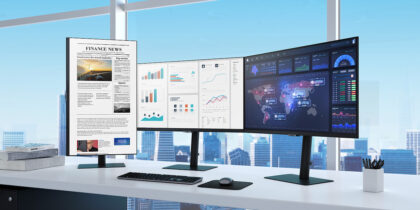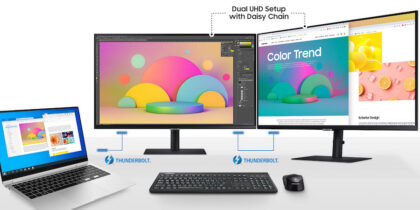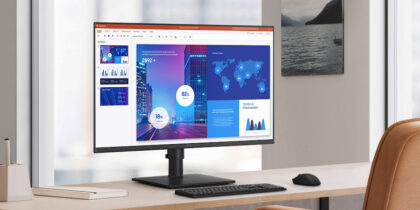It’s natural for anyone shopping desktop monitors to be swayed by size, shape, resolution and color quality. But depending on your business needs, you may also want to consider a less flashy feature: the monitor’s refresh rate.
Refresh rate is the frequency at which the screen updates with new images each second, measured in hertz (cycles per second). The content may look steady on the display, but what the viewer can’t see is how fast the content is changing — up to 360 times a second. The higher the refresh rate, the smoother the visual quality.
Super high monitor refresh rates aren’t all that important for office workers focused on lighter computing like word processing, spreadsheets and emails. But in more visual professions like creative production and game development, a high refresh rate for monitors is invaluable.
The standard refresh rate for desktop monitors is 60Hz. But in recent years, more specialized, high-performing monitors have been developed that support 120Hz, 144Hz and even 240Hz refresh rates, which ensure ultra-smooth content viewing, even for the most demanding visual processing needs.
Matching inputs and outputs
Just buying a high refresh rate monitor doesn’t mean the display quality will magically improve. The monitor’s refresh rate reflects the maximum rate at which the display can change the visuals. What happens on the screen depends on the frame rate of the output — the number of video frames that are sent to the display each second.
The majority of Hollywood movies, for example, are shot and produced at 24 frames per second (fps), so a 60Hz monitor will easily offer smooth playback. But having a 120Hz monitor (or even faster) won’t provide any visible benefit to playback quality.
Upgrade your monitor fleet
Calculate the total cost of ownership of upgrading your business's monitors with five easy questions. Download Now
A 120Hz monitor has obvious benefits, though, for modern gaming platforms that animate at 100 fps or higher. A high refresh rate helps the screen keep pace with the high-twitch inputs of players and translate them into super smooth actions on screen.
When refresh rate and frame rate are mismatched, it can result in something called screen tearing. If the computer’s graphic card is pushing out more frames than the monitor’s refresh rate can handle at a given moment, users may see two half-frames on the screen at once, bisected horizontally and slightly misaligned. In short, it doesn’t look good. Games are usually configured to automatically match the PC’s graphics capabilities to avoid tearing, but running high-action visuals more slowly than intended makes for a compromised viewing and playing experience.
Ghostbusting tech
Response time — the time it takes for a pixel to change color — also plays a role in refresh rate. A monitor can only refresh as quickly as the LCD display can make those rapid-fire color shifts.
A faster response rate is marked by a lower number — 4 milliseconds (ms) versus 16ms — which reflects faster changes and higher performance.
Particularly for fast-paced visuals, higher refresh rates and faster pixel response times reduce ghosted visuals, and ideally eliminate them. With slower tech, a high-pace action sequence may come with trailing images that result in softer, even blurry on-screen visuals.
Refresh rates for business
The appeal of high refresh rates is obvious for at-home gamers looking for a responsive, hyperrealistic playing experience. And this leisure use is part of a vast global industry. SuperData reported that the video gaming industry generated roughly $140 billion in 2020, up 12 percent from $120 billion in 2019. Statista estimates there are now more than 3 billion gamers worldwide.
The nascent esports industry is already worth more than $1 billion, and companies of all sizes and sorts — including casino operators — are scrambling to establish esports gaming zones and arenas for fans to watch and play popular games like Overwatch.
In the U.S. alone, the video game industry employs 220,000 people across all 50 states, according to the Entertainment Software Association. That’s a lot of game developers, graphic artists and playtesters working in front of monitors, most of them in need of optimal visual quality and speed at their workstations. While 60Hz refresh rates may work fine for people in finance and human resources — and even the clerical side of gaming companies — people on the visual and testing side need at least 120Hz to do their jobs well.
And it’s not just gaming. While the film industry has long produced movies at 24 fps, that frame rate is a relic of times when there were different technical restraints on cameras and projection, so a faster frame rate required more expensive film. The 24 fps standard has stuck around largely because that’s what the public is used to. Today, filmmakers are increasingly pushing frame rates as high as 120 fps.
Cost benefits
High-performance monitors with high refresh rates come with obvious visual improvements, but monitor upgrades in general bring a broader range of business benefits.
Higher-quality monitors — notably those with Quantum Dot enhancement film — offer an immense color palette and extreme color accuracy. Users don’t just see red; they see the exact shade of red the artist intended. High dynamic range (HDR), featured on high-resolution monitors from Samsung, clarifies every element of every scene — even the brightest highlights and darkest shadows — so the smallest details are fully discernible and distinct.
Premium monitors also come with built-in (adjustable) technologies that can reduce eye strain. Manufacturers, led by Samsung, have increasingly introduced curved widescreen monitors that equalize the focal distance of every part of the screen. The left and right edges are the same distance from the viewer’s eyes as the middle of the screen, reducing eye strain, as viewers don’t have to adjust their eyes as they scan the display.
High refresh rate monitors with high response times also tend to come with other premium features, such as full support for USB-C connections. With a single cable, the user can connect their PC to a monitor that functions as a USB hub for peripheral devices. This negates the need for expensive and often clunky docking stations, and can significantly reduce the number of cables at each workstation. In addition to tidier, streamlined workspaces, this also reduces the demand for IT support. With fewer connectors and devices, you tend to get fewer problems.
Mapping the high-performance future
Around the workplace, anyone in a visually creative role will see immediate benefits from a higher refresh rate. And while those in non-visual roles probably won’t see any difference, the key may be futureproofing.
When IT and information systems (IS) teams plan capital purchases, they need to look several years ahead for potential technical requirements down the road. While high-refresh monitors may have a defined user community right now, it’s likely more use cases and worker needs will develop. Monitors with low refresh rates can’t get better, but higher-refresh monitors can serve your display needs both now and in the future.
As you consider making a monitor upgrade for your team, walk through the market drivers, societal shifts and technologies of the reimagined office in this free guide. And no matter what your industry, Samsung’s high-performance monitors have you covered.







